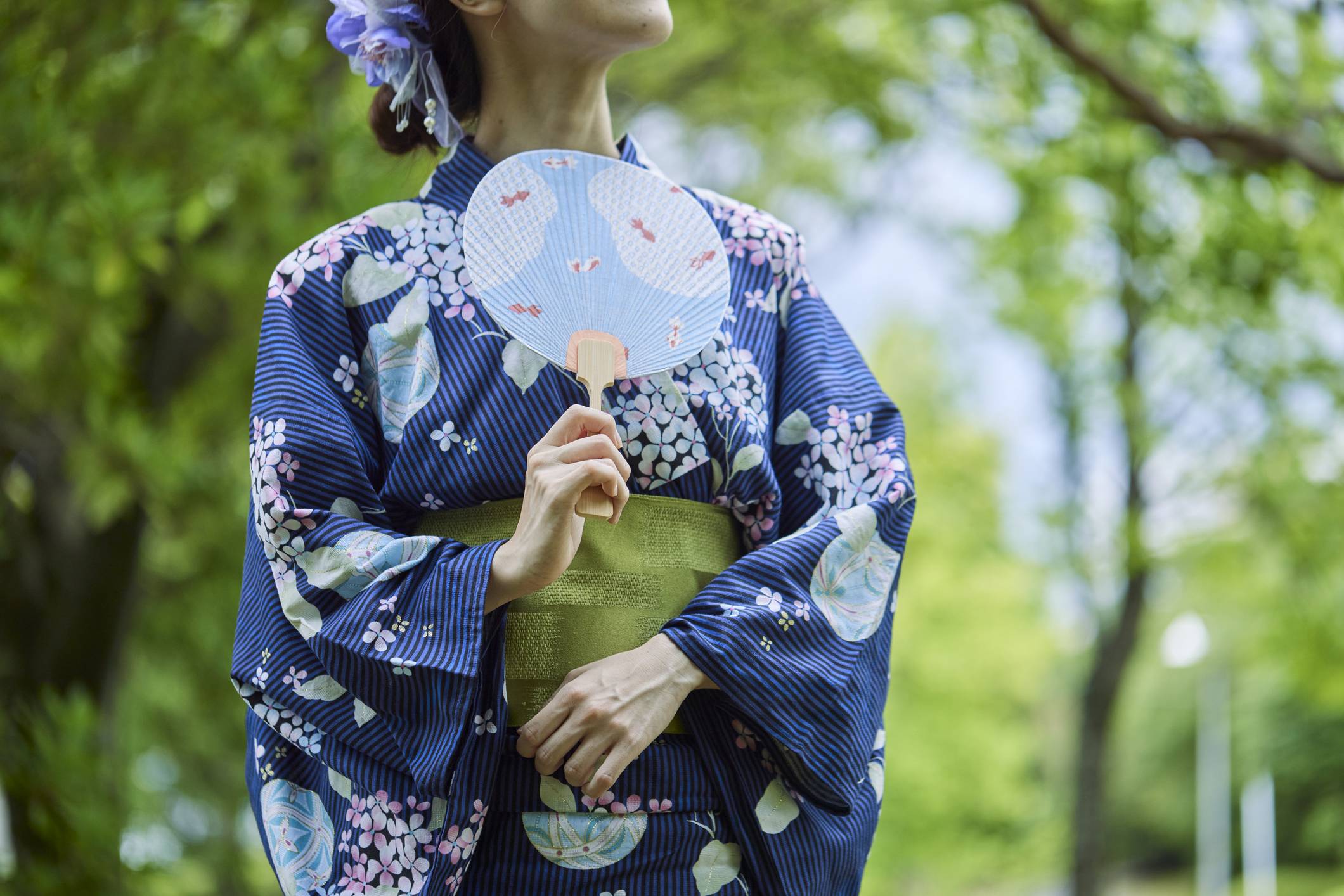Summer is the perfect time to discover the varieties of 着物 (kimono, Japanese traditional clothing). That’s because its casual version, the 浴衣 (yukata, light cotton kimono worn in summer), is lighter, more versatile and easier to put on.
Japanese people wear 浴衣 on various occasions: It can be loungewear at hot spring resorts; a practice uniform for 日本舞踊 (nihon-buyō, traditional Japanese dance); and a stylish outfit for summer festivals. 浴衣で初めて出かけるなら、多少着崩れても目立ちにくいお祭りや花火大会はお勧めです (Yukata de hajimete dekakeru nara, tashō kikuzuretemo medachinikui omatsuri ya hanabi taikai wa osusume desu, For your first outing in yukata, festivals and fireworks displays are recommended since it is less noticeable if your yukata comes slightly undone there).
First, let’s dive into the history of this summer 着物. 浴衣は銭湯の普及と共に広まりました (Yukata wa sentō no fukyū to tomo ni hiromari mashita, Yukata spread along with the popularity of bathhouses). Originally, 貴族 (kizoku, noble families) wore this light kimono when they took a steam bath in the Heian Period (794-1185). As public baths became popular in the late Edo Period (1603-1868), 浴衣 made its way to the streets as casualwear.



